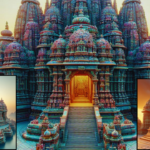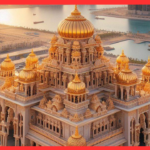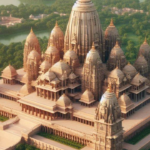Introduction
India is known for its rich cultural heritage and the existence most impressive Hindu temples in the world. These temples are not only architectural marvels but also hold immense spiritual significance for millions of devotees. Let’s explore the world of the largest Hindu temples and their magnificence.
Largest Hindu Temples Around the World
Angkor Wat
Angkor Wat – Located in Cambodia, Angkor Wat is not only the largest Hindu temple in the world. Originally dedicated to the Hindu god Vishnu, it was later converted into a Buddhist temple.
Size: Covering over 162.6 hectares, Angkor Wat is one of the largest religious monuments in the world.
Significance: Dedicated to the Hindu deity Vishnu, it was built in the 12th century by the Khmer King Suryavarman II.
Architectural Marvel:
The temple’s intricate carvings and grand scale make it a UNESCO World Heritage Site and a must-visit for tourists. Angkor Wat is located in Cambodia and is a UNESCO World Heritage Site.
The restoration and conservation efforts for Angkor Wat are primarily led by the Cambodian government, with support from international organizations and donor countries.

Akshardham Temple
The Swaminarayan Akshardham Temple is located in Delhi.
India is one of the largest Hindu temples in its intricate architecture and expansive complex. It celebrates Indian culture and spirituality.
Size: Spread over 100 acres, Akshardham Temple is a blend of traditional stone architecture and modern technology.
Significance: Dedicated to Bhagwan Swaminarayan, the temple complex showcases Indian culture, spirituality, and art.
Visitor Experience: The temple’s exhibitions, boat rides, and light shows attract millions of visitors annually.
Akshardham Delhi timing:
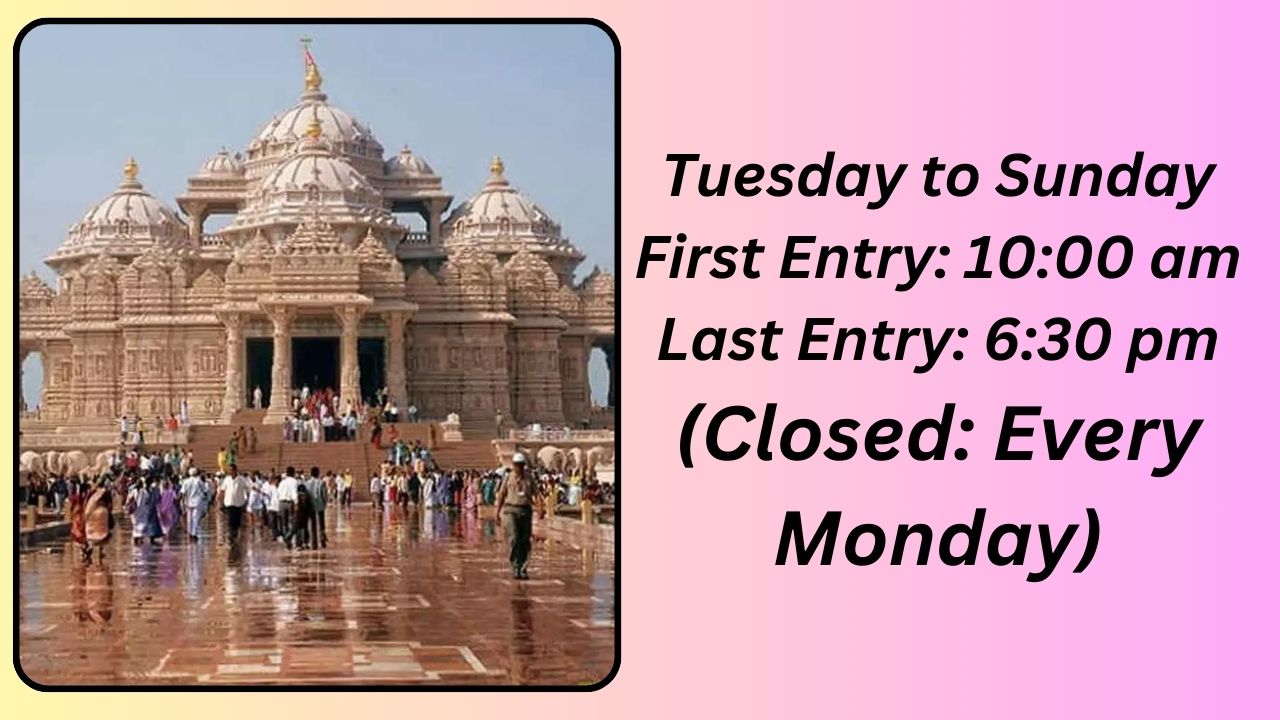
Sri Ranganathaswamy Temple
Sri Ranganathaswamy Temple – Situated in Srirangam, Tamil Nadu, India.
This temple complex is one of the largest functioning Hindu temples in the world. It is dedicated to the Hindu god Vishnu
Size: Covering an area of 156 acres, this temple is the largest functioning Hindu temple in the world.
Significance: Dedicated to Lord Ranganatha, a form of Lord Vishnu, it has seven concentric walls, symbolic of seven stages of enlightenment.
Spiritual Hub: The temple is a revered pilgrimage site and hosts various festivals yearly.

Sri Ranganathaswamy temple timings
The Sri Ranganathaswamy Temple, commonly known as Srirangam Temple, welcomes visitors from 6 AM to 9 PM every day of the week.
| Viswaroopa seva | 6:00 | to | 7:15 |
| (No Darshan) – Pooja time | 7:15 | to | 9:00 |
| Darshan Timings | 9:00 | to | 12:00 |
| (No Darshan) – Pooja time | 12:00 | to | 13:15 |
| Darshan Timings | 13:15 | to | 18:00 |
| (No Darshan) – Pooja time | 18:00 | to | 18:45 |
| Darshan Timings | 18:45 | to | 21:00 |
Chhatarpur Temple
Chhatarpur Temple, also known as Shri Adhya Katyani Shakti Peeth Mandir, is a famous Hindu temple located in Chhatarpur, New Delhi, India. It is dedicated to Goddess Katyayani, a form of Goddess Durga. The temple complex is one of the largest in India and is known for its beautiful architecture and spiritual ambiance.
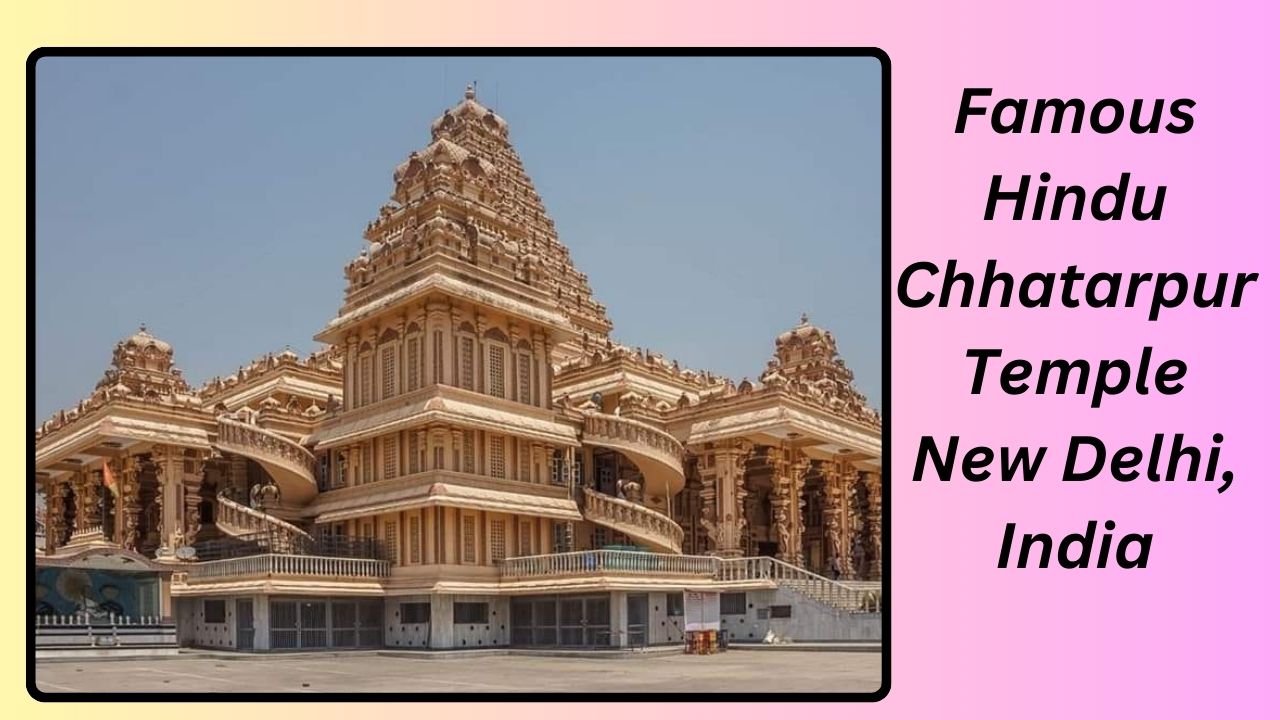
Besakih temple
Besakih Temple, also known as Pura Besakih, is the largest and most important Hindu temple complex in Bali, Indonesia. Located on the slopes of Mount Agung, the highest volcano in Bali, Besakih Temple is considered the holiest temple by the Balinese people. It is a complex of around 23 separate but related temples dedicated to a different Hindu deity.
The temple complex is known for its stunning architecture, intricate stone carvings, and breathtaking views of the surrounding landscapes. Besakih Temple is not only a significant religious site but also a popular tourist destination, attracting visitors from around the world who come to admire its beauty and spiritual significance.
Meenakshi Amman Temple:
The Meenakshi Amman Temple, also known as Meenakshi Sundareswarar Temple, is a historic Hindu temple located in the city of Madurai in the Indian state of Tamil Nadu. Dedicated to the deities Meenakshi (a form of Parvati) and Sundareswarar (a form of Shiva), this temple is one of the oldest and most prominent temples in India.
The temple complex is renowned for its stunning architecture, intricate sculptures, and vibrant colors. It features towering gopurams (gateway towers) adorned with thousands of colorful sculptures depicting various Hindu deities, mythical creatures, and scenes from Hindu mythology.
The Meenakshi Amman Temple attracts millions of devotees and tourists each year, who come to admire its beauty, seek blessings from the deities, and experience the rich cultural and religious heritage of Tamil Nadu.
Meenakshi Amman temple timings
| Wednesday | 9 am–7 pm |
| Thursday | 9 am–7 pm |
| Friday | 9 am–7 pm |
| Saturday | 9 am–7 pm |
| Sunday | 9 am–7 pm |
| Monday | 9 am–7 pm |
| Tuesday | 9 am–7 pm |
Koneswaram Temple:
The Koneswaram Temple, also known as the Temple of Konesar, is a renowned Hindu temple located in Trincomalee, Sri Lanka. Situated atop Swami Rock, overlooking the Indian Ocean, the temple is dedicated to Lord Shiva. It is considered one of the Pancha Ishwarams (five abodes of Shiva) and is highly revered by Hindu devotees.
The temple complex features impressive architectural elements, including a towering gopuram (entrance tower), shrines, and sacred ponds. The site also includes ruins of ancient structures, indicating its historical significance dating back to ancient times.
Apart from its religious importance, the Koneswaram Temple offers breathtaking views of the surrounding coastline and is a popular tourist attraction in Sri Lanka. Visitors come to admire the temple’s architecture, soak in its spiritual ambiance, and enjoy panoramic vistas of the ocean.
Kailasanathar Temple:
The Kailasanathar Temple, located in Kanchipuram, Tamil Nadu, India, is a significant Hindu temple dedicated to Lord Shiva. Constructed in the 8th century CE by the Pallava dynasty, it is one of the oldest temples in Kanchipuram and represents an excellent example of early Dravidian architecture.
The temple is renowned for its intricate carvings, particularly on the exterior walls, which depict various mythological stories, deities, and celestial beings. The main sanctum of the temple houses a Shiva lingam, the sacred symbol of Lord Shiva, while the surrounding shrines are dedicated to various Hindu gods and goddesses.
The Kailasanathar Temple stands as a testament to the architectural and artistic brilliance of the Pallava dynasty and continues to attract devotees and tourists alike, who visit to admire its historical significance and architectural splendor.
Belur Math:
Belur Math, located in Belur, West Bengal, India, is a significant pilgrimage center and headquarters of the Ramakrishna Math and Mission. It was founded in 1897 by Swami Vivekananda, a prominent disciple of the 19th-century mystic Sri Ramakrishna Paramahamsa.
Belur Math, dedicated to Sri Ramakrishna, features a unique architectural blend of Hindu, Christian, and Islamic styles. It hosts shrines for Swami Vivekananda and Sri Sarada Devi, alongside a museum and library. Serving as a hub for spiritual, educational, and philanthropic activities, it attracts visitors globally seeking to learn about Vedanta principles and universal harmony.
Ekambareswarar Temple:
Jambukeswarar Temple:
Meenakshi Temple:
The Meenakshi Amman Temple, also known as Meenakshi Sundareswarar Temple, is a historic Hindu temple in Madurai, Tamil Nadu, India. Dedicated to the goddess Meenakshi and her consort Sundareswarar, it is one of India’s oldest and most prominent temples.
The temple complex is renowned for its stunning architecture, intricate sculptures, and vibrant colors.
The Meenakshi Amman Temple draws millions of visitors annually to admire its beauty and seek blessings.
Exploring the Grandeur
Visiting these temples offers a blend of spirituality, history, and architectural brilliance. From the towering gopurams to the serene inner sanctums, each temple tells a unique story of devotion and craftsmanship. The carvings, the vibrant colors, and the lingering fragrance of incense create an immersive experience for visitors.
Conclusion
The largest Hindu temples in the world stand as a testament to the enduring faith and art of ancient civilizations.
As you plan your next travel consider including these architectural wonders to witness the grandeur of Hindu temple architecture firsthand.



